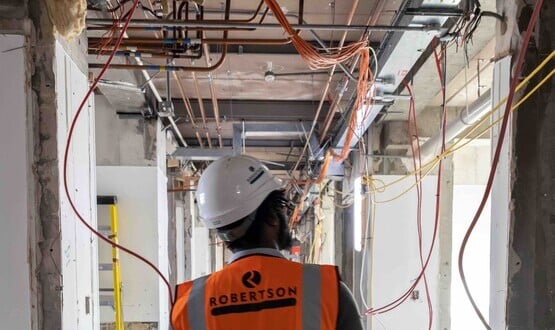Airedale General Hospital uses indoor mapping to manage RAAC repairs
- 9 May 2024

Airedale General Hospital is using an indoor mapping geospatial system from Esri UK to manage its reinforced autoclaved aerated concrete (RAAC) monitoring and repairs system.
According to the software supplier, the use of the indoor mapping system is helping to ensure the safety of patients and staff at the hospital, as well as making the process of inspecting 20,000 concrete planks 50% more efficient.
The Geographic Information System (GIS) software, supplied by Esri UK, replaces paper-based processes with digital workflows with the aim of improving the accuracy and efficiency of Airedale General’s RAAC inspections.
Esri’s ArcGIS system can reveal where the highest risk areas are in real-time. This data is then used by Airedale General to inform the mitigation works.
Richard Burgin, estates project manager, Airedale General Hospital said: “The Esri GIS has given us a more robust and resilient process, with a reduced risk of human error that instantly shows different levels of risk so we know where to focus. RAAC has a major operational impact, sometimes disturbing clinical and operational functions so surveys and mitigation work needs to be accurate and fast and the system underpins that.”
The hospital has one of the highest quantities of RAAC panels in the NHS, with 83% of the hospital’s floors, walls and ceilings made from the material. It is due to be rebuilt by 2030 as part of the government’s new hospital programme.
But until then, mitigation works – including temporary propping, steel reinforcements and fixing roof leaks – are being undertaken to maintain safe operations on the site.
Using the software, inspection data is now captured using custom forms on iPads. Planks are surveyed either monthly, three-monthly, six-monthly or yearly in line with current guidance and each plank’s rating.
The tool can run different spatial analyses and scenarios, delivering quicker and improved insights. It also takes into consideration factors which impact on RAAC, such as the weather and orientation of a building, to improve assessments.
It also helps to direct the survey team to the wards they need to survey and which planks are due for inspection.
The digital workflow provides Airedale General with an audit trail supporting compliance and reporting, which is directly linked to the government funding it receives to manage RAAC.
Burgin continued: “The GIS is a powerful tool which helps manage the sheer volume of work, provides a single source of truth on RAAC risk and helps prioritise where repairs and interventions should focus to keep the hospital running safely.
“The digital approach increases the accuracy of the data and makes it more shareable, improving the ability to communicate the scale and complexity of the problem, with both internal and external stakeholders.”

